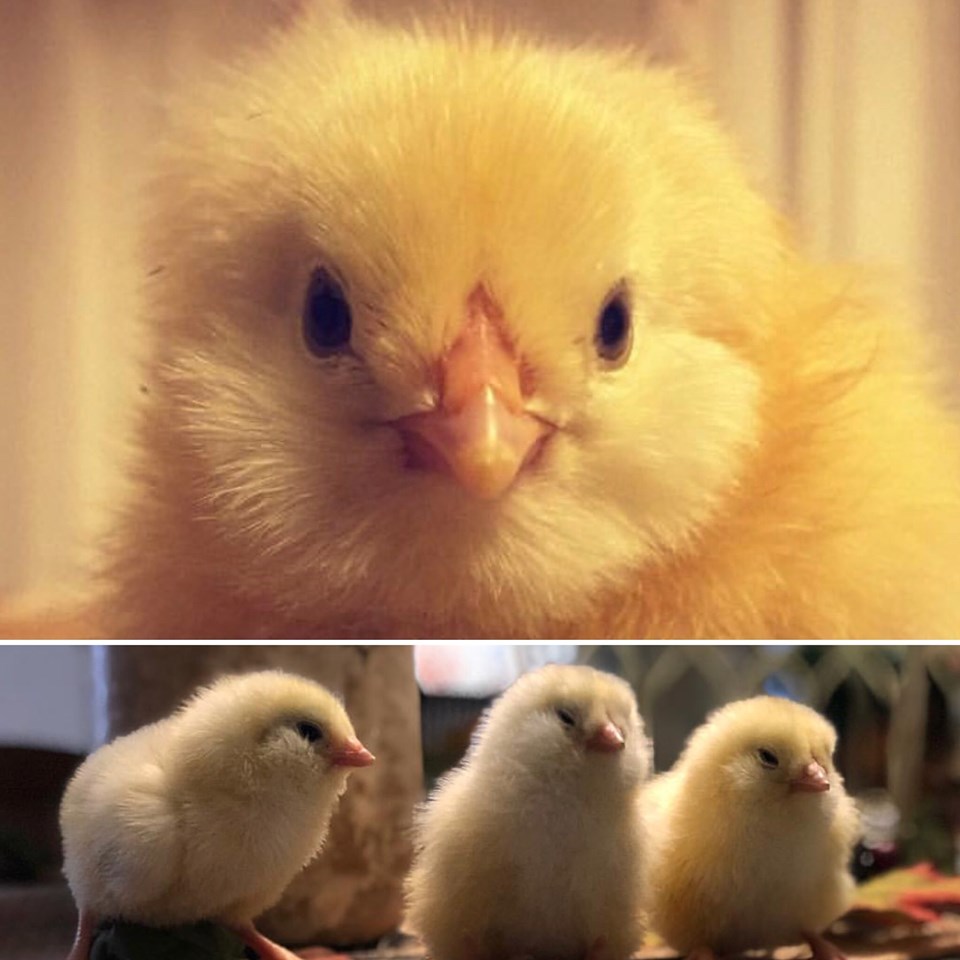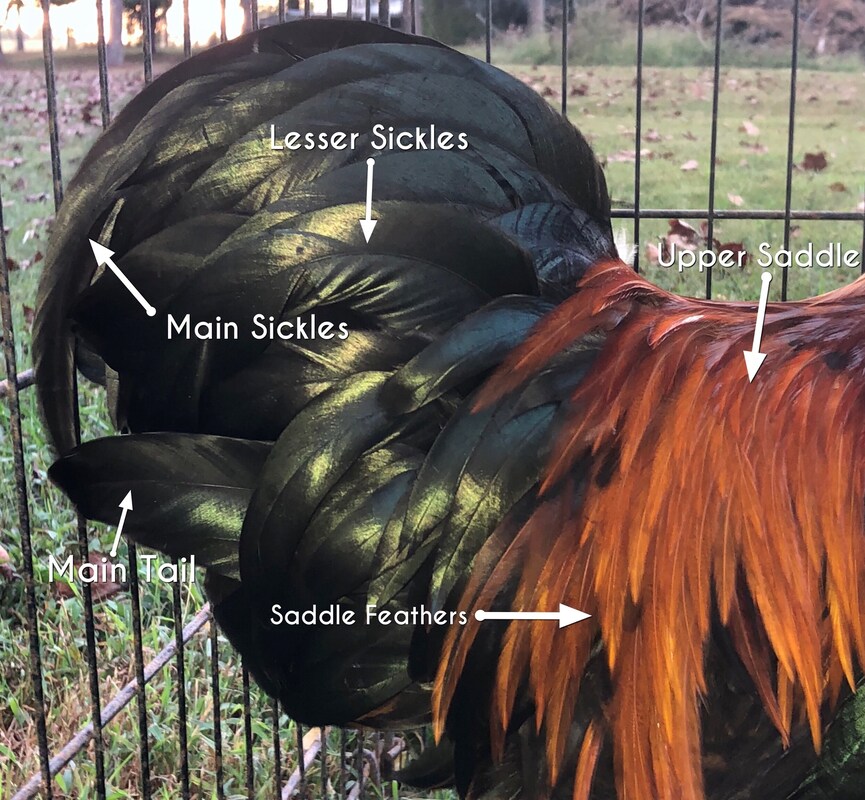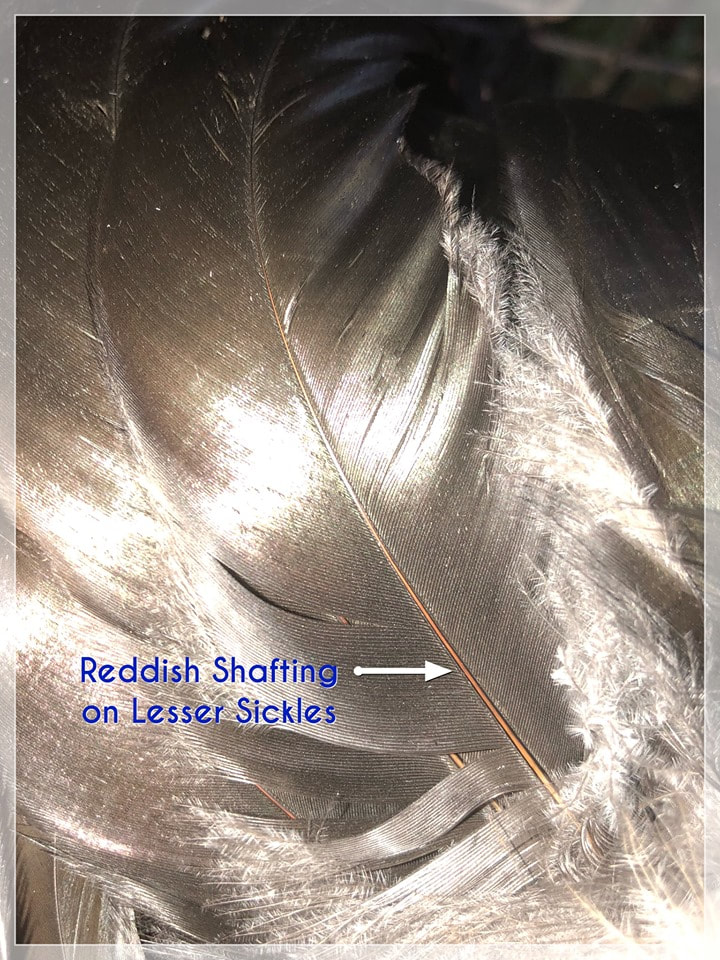www.showameraucanas.com
|
Muffs and beard (Mb) is known as an autosomal incomplete dominant trait. It is an observable physical characteristic involving elongated feathers that form on the side of the face and below the beak.
First, let’s break things down and explore the meaning of an autosomal incomplete dominant trait. Chickens have 39 pairs of chromosomes. They have two categories of chromosomes known as sex chromosomes and autosomes. An autosome is simply defined as a chromosome that is not a sex chromosome. Genes are contained within these chromosomes. Each parent contributes one allele to form a particular gene in a diploid organism. Incomplete dominance means that one allele is not completely expressed over the allele that it is paired with. This results in a phenotype that is a combination of the phenotypes of both alleles. There are three genotypes for the Mb locus regulating the Mb trait: 1) Mb/Mb homozygous (carrying two copies of the gene and exhibiting a full muff/beard) 2) Mb/mb heterozygous (carrying one copy of the gene and exhibiting a partial muff and beard) 3) mb/mb wild-type homozygous (not carrying any copies of the gene and what many refer to as clean-faced) So how does the muffs and beard (Mb) trait affect our Ameraucana breeding programs? Using a punnett square, we can predict the genotypes of a particular cross. If you mate two homozygous Mb/Mb birds together, all resulting offspring will have two copies of the Mb gene and full muffs and beard. If you mate two Mb/mb heterozygous birds together, 25% of the offspring will be homozygous Mb/Mb and have full muffs and beard, 50% will be heterozygous Mb/mb and have partial muffs and beard, and 25% will be homozygous wild-type mb/mb and not have muffs or a beard. If you mate a Mb/Mb homozygous bird with a Mb/mb heterozygous bird, 50% of the offspring will have full muffs and beard and 50% will have partial muffs and beard. Mb birds are born with muffs and beard, and the remarkable differences of Mb/Mb, Mb/mb, and mb/mb birds can be witnessed during embryonic development. I have attached a photo from a study that shows HOXB8 expression is increased considerably in the facial skin of developing Mb/Mb embryos and postnatal chicks (Guo et al., 2016). This study also found that the Mb allele that causes the Mb phenotype is “a derived allele where a complex structural variation (SV) on GGA27 leads to an altered expression of the gene HOXB8. It is a structural mutation resulting from the duplication of three regions on chicken chromosome 27 (GGA27). The three duplication regions are located around 1.70 Mb (CNV1), 3.58 Mb (CNV2), and 4.47 Mb (CNV3) on GGA27, respectively (Guo et al., 2016).” lt is important to note that several studies have identified that wattles are absent or small when Mb is present (RG, S 1990). Many researchers speculate that the Mb trait is highly associated with the Wattles locus and that there are underlying complex interactions between Mb and Wattles. Hopefully this post will help you as you are assessing your Ameraucana chicks and breeding age birds for the Mb phenotype and setting up breeding pens. Good luck with your flock! Are you interested in learning more about Ameraucanas and breeding them towards the standard of perfection? Join the Ameraucana Breeders Club at ameraucanabreedersclub.org. To purchase an American Poultry Association standard of perfection book, visit the following link: http://www.amerpoultryassn.com/store.htm Guo Y, Gu X, Sheng Z, Wang Y, Luo C, Liu R, et al. (2016) A Complex Structural Variation on Chromosome 27 Leads to the Ectopic Expression of HOXB8 and the Muffs and Beard Phenotype in Chickens. PLoS Genet 12(6): e1006071. RG S (1990) Mutations and major variants of plumage and skin in chickens. In: Crawford RD, editor Poultry Breeding and Genetics Amsterdam, Netherlands: Elsevier: 169–208.
0 Comments
When studying the American Poultry Association standard of perfection for a Wheaten Ameraucana cockerel/cockbird, we find the following:
1. The saddle should be “lustrous, light orange, free from dark feathers.” The saddle feathers are found “at the rear of the back extending to the juncture of back and tail of a male fowl, covered with long pointed fingers known as saddle feathers.” 2. The main tail should be “black with lustrous greenish gloss.” The main tail feathers are “the straight, stiff long feathers of the tail located under and between the coverts and sickles of the male.” 3. Lesser sickles should be “lustrous, greenish black with reddish cast in shafting.” The lesser sickles are “the long curved feathers of the male chicken tail, exclusive of the top two longest main-sickles, which hang to the side of and cover most if not all of the main tail.” Shafting is “a color characteristic where the shaft of a feather is either lighter or darker than the color of the web.” So in this case, we want to look for a reddish cast on the shaft of the lesser sickle feathers. *Here are some notes on cutting for defects: 1. Regarding the main tail feathers, foreign color results in a 1/2 pt deduction per feather that it is present. 2. Regarding the sickle feathers, foreign color results in a 1 pt deduction per feather that it is present. These are a few points to keep in mind when assessing your wheaten cockerels and cockbirds. To view the full standard, you can purchase an American Poultry Association Standard of Perfection book at the following link: http://www.amerpoultryassn.com/store.htm |
AuthorI enjoy spending time outdoors, studying poultry genetics and working with show quality Ameraucanas. All information shared on my blog is under copyright. Archives
July 2020
Categories |



